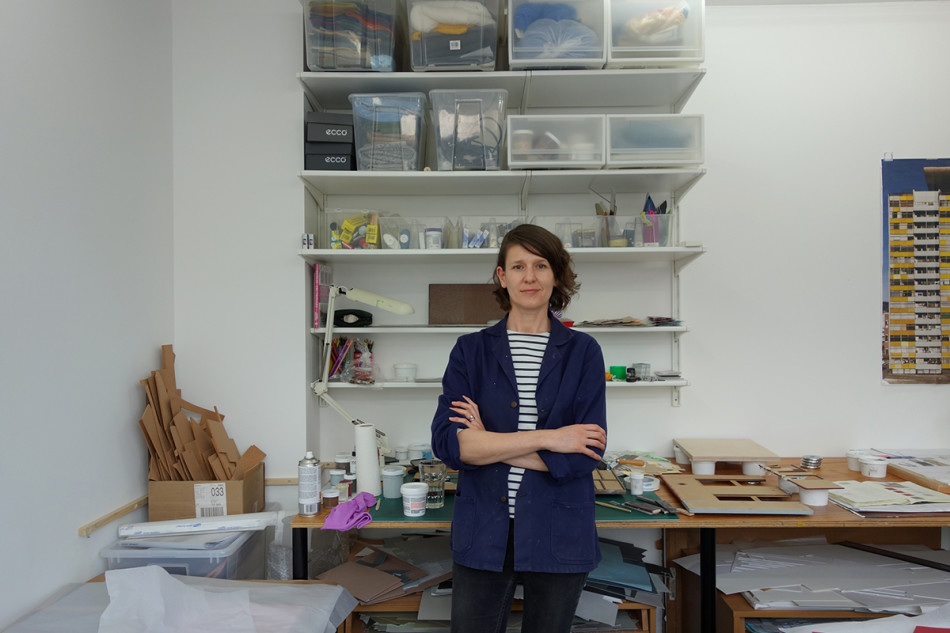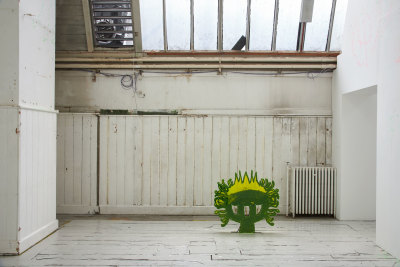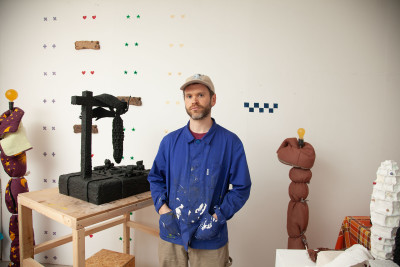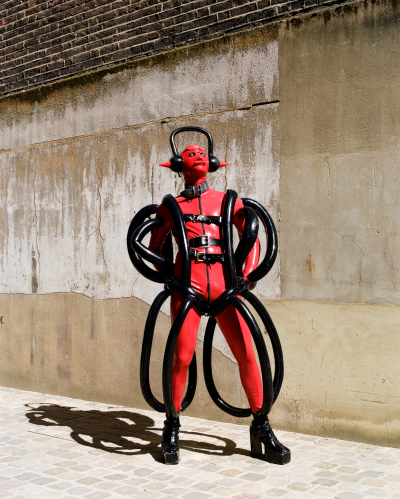Catching up with… Lucy Williams
Series: Graduates of the RA Schools
By Hatty Nestor
Published 15 May 2015
As she launches her new book, Lucy Williams discusses her time at the RA Schools and tells us how her block colour, architectural collages bring a fresh perspective to urban landscapes.
-
Lucy Williams graduated from RA Schools in 2003 and has continued to redefine the concept of collage through her intricate mixed-media paper cuts. The London-based artist creates detailed pieces which reference Bauhaus modernist architecture and, through multiple layers of brightly coloured paper, address what she calls, “aesthetic modes of multiplicity” – the way in which her works experiment with different stages of construction. Her architectural collages, with their multiple layers of bright primary colours, challenge our spatial perceptions and conventional artistic depictions of interior and exterior urban environments.
After completing her BA in painting at Glasgow School of Art in 1995, Williams worked for four years before enrolling at the RA Schools as a mature student in 1999. She found it to be the perfect environment to dismantle and examine her work. The three-year intensive course provided her practice with “the meticulous attention it needed, there wasn’t another course which would have given that level of intimacy, attention or rigour.”
The teaching she enjoyed in the Schools cemented a critical and theoretical approach to her practice. “My tutors, Richard Kirwan and John Wilkins, who had previously taught me in Glasgow, were brutal in pushing my practice in a direction I hadn’t considered before,” she explains. “I was itching to go back and sort out my work. My years out felt quite like a wilderness and the direction that the Royal Academy provided me with became invaluable.”
-
Since graduating 12 years ago, Williams has had six solo shows in a decade, nationally and internationally. Her most recent solo show was at McKee Gallery in New York, where she exhibited a selection of three-dimensional objects, sculptures and prints – all visually dynamic in her signature bright yellows, blues and reds.
Layering is central to Williams’s practice of constructing images. Her work derives from a fascination with internal/external spaces and the physical properties of materials: “The layers of process, and tension between private and public. For instance, perspex has always been an interesting material to me due to its neutrality, an inherent, simplistic balance.” To achieve the right effect, every material in Williams’s studio is reconstructed, reevaluated – even the A3 sheets of paper in her studio are meticulously painted by her assistants, the papers corners cut out and stored in a folder of colour charts to act as an archive of every piece painted. Every colour ever made is documented. “Before we start the paper and palette is considered: all the paper I use is stretched and painted with rollers,” she explains. “It is a process in itself.” There are obsessive traits elsewhere: Williams collects photographs of buildings and interiors, and these images inspire her own translations of space in 3D.
-

Lucy Williams in her studio
2015.
-
After such a period of intense exhibition, Williams is now taking a step back to focus solely on her practice, working from her new studio in Haggerston. Earlier this year she was invited by Roads Publishing to create an artist’s book, intended as an archive of her work. Williams approached the book as she would a more familiar project. “It was thematic, referencing old architectural books from the high modernist period, disregarding chronology and speculating on different literary modes of reading and writing,” she said. “I am extremely excited about the book. I’m excited that my practice will be portrayed in a new light.” As the rich tapestry of collages which make up the book suggest, Williams is as equally interested with the journey of creation as with the finished piece. “My work is ingrained in the processes and navigations inherent to the constructing an artwork. Once I have experimented, my ideas can manifest themselves in any form.”
-
Gallery

Lucy Williams, Garden House, 2011.

Lucy Williams, Bousfield School, 2013.

Lucy Williams, Yellow dining room, 2012.

Lucy Williams, The Dining Hall, 2014.

Lucy Williams, Great Arthur House, 2014.

Lucy Williams, The tiled cathedral, 2012.
-
See the full list of publications by Lucy Williams at Timothy Taylor Gallery.
Hatty Nestor, @hnestor is a London-based writer.











